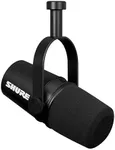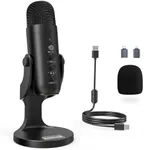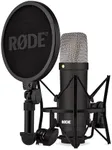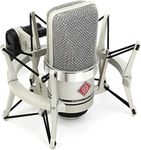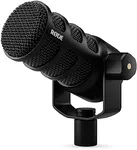Buying Guide for the Best Studio Microphones For Vocals
Choosing the right studio microphone for vocals is an important step in achieving the sound you want, whether you're recording music, podcasts, or voiceovers. The right microphone can make your voice sound clear, natural, and professional. When shopping for a studio microphone, it's important to understand the key features that affect how your voice will be captured and how the microphone will perform in your recording environment. By learning about these features, you can match a microphone to your specific needs and recording style.Microphone Type (Condenser vs. Dynamic)The type of microphone is one of the most important choices you'll make. Condenser microphones are very sensitive and capture a lot of detail, making them popular for studio vocals. They work well in quiet, controlled environments and are great for picking up the nuances in your voice. Dynamic microphones are less sensitive and more rugged, often used for live performances or in situations where background noise is a concern. If you want a crisp, detailed vocal sound and have a quiet space, a condenser is usually the best choice. If you need something more forgiving of background noise or plan to use it in different settings, a dynamic microphone might be better.
Polar PatternThe polar pattern describes how a microphone picks up sound from different directions. The most common pattern for studio vocals is cardioid, which captures sound mainly from the front and rejects noise from the sides and back. This helps isolate your voice from room noise. Other patterns like omnidirectional (picks up sound from all directions) or figure-8 (front and back) are less common for solo vocals but can be useful in special recording setups. For most people recording vocals, a cardioid pattern is the best starting point because it focuses on your voice and reduces unwanted sounds.
Frequency ResponseFrequency response tells you which parts of the sound spectrum the microphone can capture, from low bass to high treble. A flat frequency response means the microphone records all frequencies equally, giving a natural sound. Some microphones are designed to boost certain frequencies, like the presence range, to make vocals sound clearer or brighter. If you want your recordings to sound as natural as possible, look for a flat or slightly enhanced frequency response in the vocal range (around 80 Hz to 15 kHz). If you prefer a certain character or brightness in your voice, you might choose a microphone with a tailored frequency response.
SensitivitySensitivity measures how well a microphone can pick up quiet sounds. High-sensitivity microphones capture more detail and are good for soft singing or spoken word, but they can also pick up more background noise. Lower sensitivity microphones are less likely to pick up unwanted sounds but may not capture all the details of a soft voice. If you have a quiet recording space and want to capture every nuance, a higher sensitivity is helpful. If your space is noisy or you have a powerful voice, a lower sensitivity might be better.
Connectivity (XLR vs. USB)Microphones connect to your recording equipment in different ways. XLR microphones are the standard for professional studios and require an audio interface or mixer, offering the best sound quality and flexibility. USB microphones plug directly into your computer and are easier to set up, making them a good choice for beginners or home studios. If you want the highest quality and plan to upgrade your setup over time, XLR is the way to go. If you want something simple and portable, USB might be more convenient.
Build Quality and AccessoriesThe build quality of a microphone affects its durability and how it handles regular use. Look for microphones with sturdy metal bodies and good construction. Accessories like shock mounts (to reduce vibrations), pop filters (to soften harsh sounds), and carrying cases can make recording easier and protect your investment. If you plan to move your microphone often or use it in different locations, durability and included accessories become more important.
